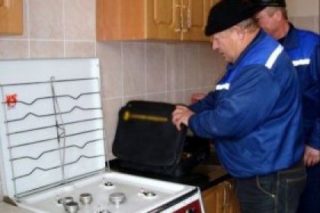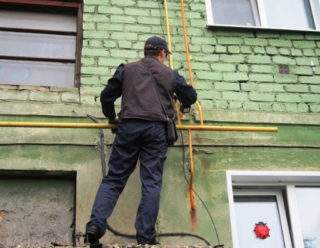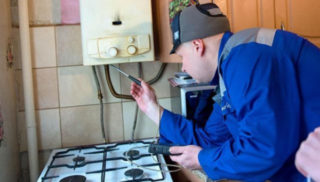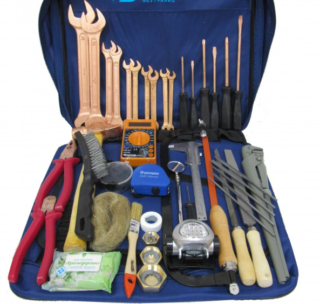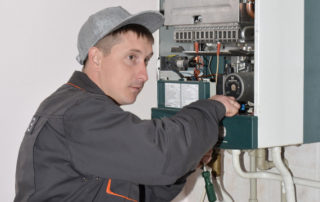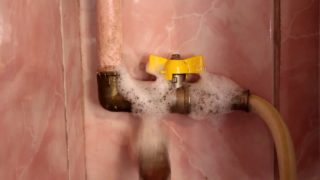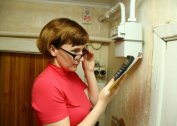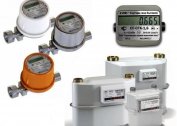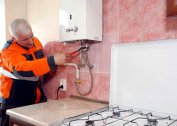Gas equipment wears out and fails over time. A gas leak is very dangerous and fraught with explosions and fires. Scheduled periodic gas checks in the apartment and in private housing prevents accidents and loss of life.
Timing and frequency of gas equipment inspection according to law
Gas appliances are checked when there are any malfunctions or in a planned manner. Scheduled maintenance is carried out at regular intervals. Regulate its normative and legislative acts:
- Decree “On the Procedure for Providing Public Services”
- document “On the procedure for gas supply to the population”
- order of the Ministry of Regional Development on the procedure and repair of gas equipment in residential buildings;
- Resolution of the Gosstroy of the Russian Federation, describing the rules and norms of housing utilization.
Documents define categories of equipment and areas of responsibility.
Outdoor gas pipeline
External gas network. These include highways, distribution nodes, city networks. Maintenance is carried out by gas services of local, city, regional significance.
The responsibilities of the services include:
- leak test of pipe joints - using emulsions or leakage sensors;
- bypass and inspection of the tracks, if they are located above the ground;
- assessment of the integrity of compounds, cases, coloring.
The results of the checks are transferred to the city or district gas industry.
Domestic gas equipment
The ultimate consumer of gas is the homeowner. But if in his own house all communications fall into the zone of responsibility of the owner, then the situation is different in an apartment building. The owner of the apartment can only be responsible for the equipment that is located inside the home. Pipes and devices that ensure the distribution and supply of gas from the external highway to each apartment belong to the common house property.
VDGO includes:
- MKD gas pipeline connected to a common network;
- shut-off valves, regulating the supply of fuel to individual gas facilities;
- risers in the building;
- common house flow meters;
- gas-consuming equipment, such as a boiler, if the house has general heating;
- gas control systems;
- technical device for adjusting and supporting the system.
Responsibility for VDGO is borne by the residents of the house. This means that the general meeting of tenants or the management company entrusted with the management of the property is required to enter into a maintenance and repair agreement with the relevant organization. A company can be either private or public.
Individual gas equipment
In different dwellings, different devices are referred to VKGO:
- gas stoves - today are becoming increasingly rare;
- heating boilers;
- heating boilers;
- Counters
- locking devices, branches, cranes.
The owner is responsible for the normal operation of the devices. Self-checking is prohibited. The homeowner is obliged to ensure timely inspection by specialists:
- Residents of an apartment building can enter into a general contract with a contractor company.The UK or HOA on behalf of the owners of the apartments conclude an agreement with a company that in the future will be engaged in maintenance of the household and individual.
- The owner of the apartment has the right to independently apply to gorgaz and draw up an individual contract with her.
Equipment malfunctions lead to leaks, accidents and loss of life. Gas supply in case of faulty equipment is strictly prohibited. In the same way, delivery is not allowed if there is no information about whether the equipment is working or not. In this case, the delivery will be terminated, even if the landlord regularly pays.
In a private house, the owner of the building is responsible for the internal and individual gas facilities.
A maintenance agreement is concluded for at least 3 years. The frequency depends on the dates specified by the manufacturers of gas appliances.
Verification Equipment
The following tools are required to inspect the elements of the in-house and in-house gas facilities:
- gas key - the main device during installation or repair;
- set of open-end wrenches - a tool for changing gaskets. This part wears out the fastest and most often needs to be replaced;
- key pliers - a tool for replacing gaskets and fixtures of non-standard sizes;
- a set of screwdrivers - with their help tighten the connecting bolts, locking screws, tighten the clamps.
Support materials will also be required:
- Soap dish and shaving brush - the easiest and fastest way to detect a gas leak in the area;
- gas leak indicator - a model with a sampling probe is used.
The gasman must have with him materials for minor quick repairs: rubber and paronite gaskets, fum tape, and so on.
Contractual obligations of the company
The main task of the service organization is to prevent emergencies. To this end, the gas company performs the following:
- scheduled inspection of equipment - internal and individual, if this is included in the agreement;
- liquidation of a detected leak;
- fault repair;
- installation, dismantling and replacement of flow meters;
- checking the operation of the counters and the integrity of the seals on them;
- apparatus replacement;
- gas shutdown.
Company employees are obliged to inform about their arrival in advance and present certificates.
According to paragraph 29 of the resolution on the provision of gas supply services, the owner of an apartment or private building is obliged to provide the gorgas employee with access to all rooms where devices and meters are located.
Gas equipment verification work in progress
Gas system maintenance includes a number of activities. Their number and nature depends on the complexity of the system and the type of devices installed. The standard procedures for checking the VDGO include:
- assessment of the tightness of all connections: pipes, components, devices;
- checking the integrity of pipes and equipment;
- disassembly and lubrication of cranes;
- assessment of draft in ventilation ducts and smoke mines, since the safe operation of gas appliances depends on the functionality of the latter;
- instructing users to prevent problems.
When inspecting the network inside the apartment, the following events are added:
- inspection of the gas meter and seals, verification of readings;
- checking the operation of the boiler, stove, boiler, other devices;
- elimination of detected malfunctions;
- recommendations and warnings about the maintenance of certain devices.
If the owner of the apartment wants to replace the meter, stove, boiler, he must first consult with the service company. Models need to be selected based on the features of the local gas network and existing devices. It is rather difficult for a layman to do this.
Verification Acts
Checking gas equipment in a house or apartment is considered completed only after the inspection certificate is accepted and signed. The document indicates the following:
- time and place of maintenance;
- subscriber data - name, passport data;
- Name and position of compilers;
- information about the status of devices;
- list of detected defects;
- consumer advice - repair, re-inspection after a certain period, replacement.
A document is drawn up in 3 copies: 1 remains with the consumer, 2 is transferred to the Criminal Code, 3 is stored in the gas supply company.
If the devices are deemed unsuitable for use, the inspection act serves as the basis for prohibiting the use of the device and turning off the gas.
Frequency and cost of equipment inspection
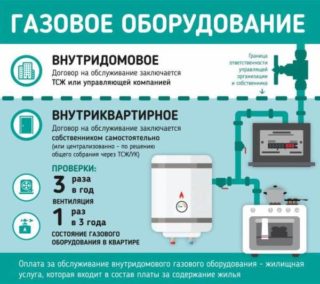 Inspection is carried out 1 time in 3 years. The period may be set by the equipment manufacturer. If the service life of the device has expired, maintenance is carried out once a year.
Inspection is carried out 1 time in 3 years. The period may be set by the equipment manufacturer. If the service life of the device has expired, maintenance is carried out once a year.
Inspection - the procedure is paid. Its cost depends on several factors.
- If the residents of the apartment building have a collective agreement, the verification fee is included in the utility bill.
- If the owner of the apartment has concluded an individual contract, after maintenance, he receives a receipt for payment and deposits the required amount into the company account.
The cost is determined by the number of gas appliances. Inspecting a gas stove costs an average of 500 p. If there is a geyser, a heater, a meter in the house, the inspection price rises to 1000 r. and higher.
